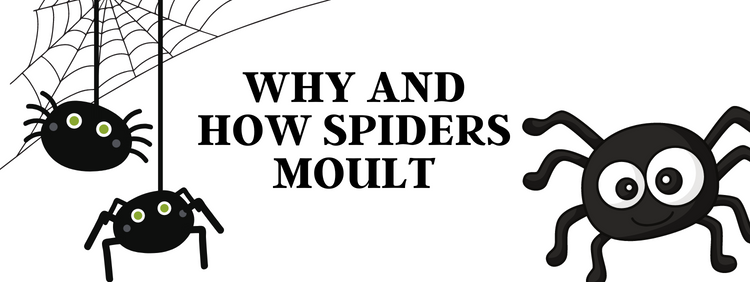Cambridge Pest Removal: Why and How Spiders Moult

Spiders play an integral role in the ecosystem and help with natural pest control around the house; still, you do not want too many spiders lingering around your property or inside your home. Even though you will want to contact spider removal in Cambridge, you can admire the unique attributes of arachnids, especially moulting.
Answering Frequently Asked Questions About Spider Moulting
Like amphibians and arthropods, spiders shed their skin multiple times throughout their lives, allowing them to grow into the hunters’ residential pest control experts are familiar with. The process is essential to the creatures’ ability to live and thrive, but many people do not understand the process of moulting or its purpose.
What Is Spider Moulting?
Many people refer to spider moulting as shedding its skin, but that is not an entirely accurate interpretation of the process. Spiders do not have skin like humans or other mammals; they also do not have an internal skeleton. Like insects, spiders have an exoskeleton — a hard outer layer that offers protection against potential predators.
Chitin is the primary fibre of the exoskeleton, and it provides both rigidity and flexibility. The hard exoskeleton does not grow with the spider; instead, it sheds off, making room for the new larger exoskeleton underneath. This moulting happens multiple times throughout a spider’s life until it reaches full maturity.
How Many Times Do Spiders Moult in Their Lives?
The number of times a spider moults depends on the spider and its size, but all spiders moult. On average, spiders moult between five and eight times in their lives. A brown recluse might moult eight times in its life before reaching its full size.
Also, some spiderlings will moult the first couple of times in their mother’s web before moving on to build their own. In the early stages of development, a spider might moult once every 30 days or so. Once it becomes older, it may only moult once per year.
Why Do Spiders Need To Moult?
While it can look uncomfortable, moulting does not hurt spiders. It is a natural and necessary process. If a spider does not moult, it cannot grow, and it becomes vulnerable. There are instances of spiders becoming trapped in their carapace — the more rigid outer shell. The spider will not survive if it cannot escape the carapace.
For people who care for spiders as pets, you can help ensure a safe transition by keeping the tank clean and moist. During moulting, humidity is a spider’s friend. Consult with experts to learn more about how to help a moulting spider.
How Do Spiders Moult?
Moulting comprises three phases: pre-moulting, moulting, and post-moulting. Pre-moulting is a period of inactivity that occurs as a spider grows a new exoskeleton under its existing one. The spider creates an endocuticle layer to separate the new exoskeleton from the current outer layer, which is later digested. Depending on the spider, the pre-moulting phase can last a few days or several months.
The moulting process begins once the endocuticle layer is reabsorbed. You can tell when this phase starts because the spider will flip onto its back. The spider will crack open the outer exoskeleton and begin pushing its way free.
Once free, the spider enters the post-moulting phase. The spider’s new exoskeleton is still softer than it needs to be. Over the next few weeks, the spider will move its legs often to ensure flexibility.
Hiring a Spider Control Service in Cambridge
Spiders are fascinating creatures, but you still don’t want them populating your home. If you have a lot of spiders in your house, contact Truly Nolen Canada to schedule a home assessment, and discover the cause of your spider problem.